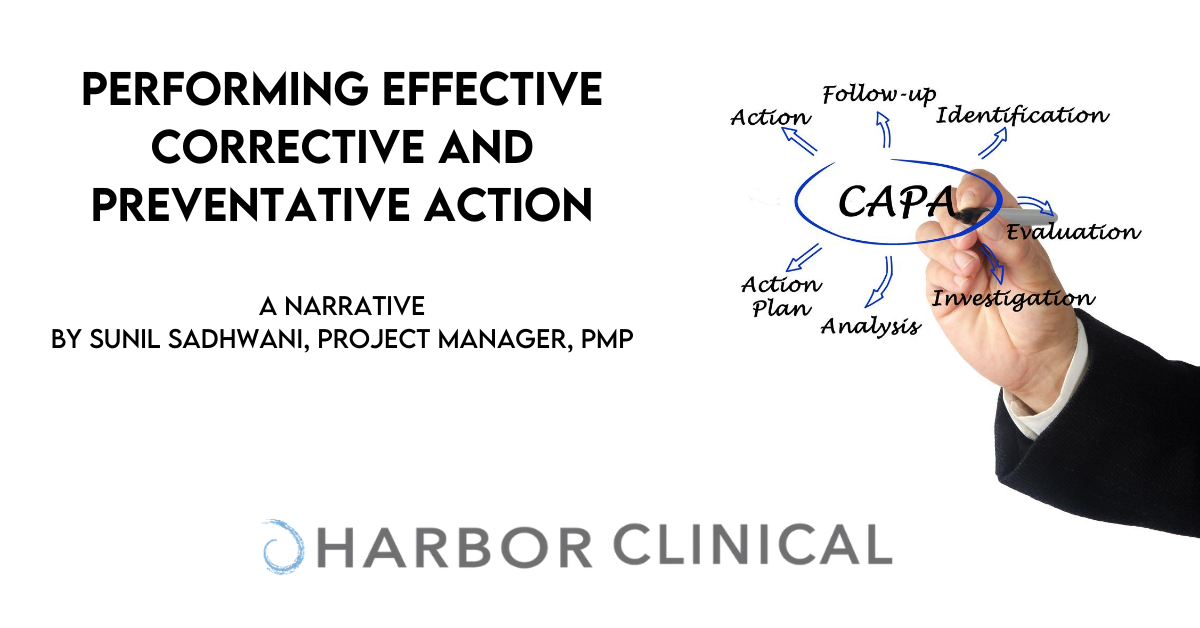Each organization has its processes and methodologies on how to vet critical decisions among its stakeholders. The criteria used for decision making are typically well defined and understood. Crisply allowing a good comparison of the options or trade space to have the decision be more apparent to the stakeholders requires some planning and creativity. This blog focuses on such techniques that may be useful to apply in Clinical Studies to make for a more engaging and efficient decision-making process. A brief introduction on the techniques is discussed and a relevant example on application of these techniques follows.
Sunil Sadhwani

Recent Posts
Decision Making Tools and Techniques for Use in Clinical Studies
Topics: Clinical Research, Functional Service Provider, project management, decision science
Conducting Effective Project Management Meetings
In every organization regardless of industry, team meetings are a big part of a normal work day/week. Meetings are critical to ensure adequate communication across team members, especially in today’s environment with a highly diversified workforce that operate in multiple locations. It is certainly a common experience that some meetings are not as efficient as others and some are downright not worth the time spent at them! This blog focuses on some useful approaches for conducting effective meetings, specifically in a clinical study.
Topics: Clinical Research, Pharmaceuticals, Functional Service Provider, clinical project management, project management
Earned Value Management in Clinical Trials: Part 2
An earlier blog had identified the benefits of using Earned Value Management (EVM) techniques in Clinical Studies. This synopsis provides a practical example of how to implement those techniques and making useful decisions from the available data. To support this example, a mock study with the following scope of work, budget and timeline requirements has been established:
Topics: Clinical Research, Pharmaceuticals, biotechnology, earned value management, function service provider, clinical project management
Benefits of Earned Value Management in Clinical Trials
Earned Value Management (EVM) techniques are commonly used as a disciplined process to track Key Performance Indicators (KPIs), Cost and Schedule. Typically for long duration projects which may span several major subprojects, these techniques can be extremely useful to gauge the team’s ability to adhere to a cost budget or a critical timeline for the project. A clinical study is a classic use case for applying EVM techniques as there are major subprojects within the project spanning different resource types. Additionally, the monetary value of clinical studies ranging from ~$5M in a phase 1 trial to exceeding $100M for a Phase 3 trial offer the opportunity to realize substantial financial savings through crisp execution using KPIs as benchmarks through the study.
Topics: FSP, Functional Service Provider, EVM, earned value management, KPI, clinical trials
Performing Effective Corrective and Preventative Action
Performing an ideal clinical study would result in zero non-compliances throughout its entire life cycle. What an achievement that would be! Perhaps this is a utopian/non-realizable outcome, but wouldn’t it be great to avoid non-compliance issues resurfacing in the same study or perhaps in a follow on study. How does one incorporate lessons learned or experience from compliance issues to prevent recurrence? One clear approach is to thoroughly understand what caused the non-compliance –to get to that ‘a-ha’ moment. What’s the documentation process for recording the non-compliance? Is there a repository of non-compliances that is maintained to log these findings? Are there owners or actionees for these non-compliances to investigate them and close them within a reasonable time frame? As these questions are identified, a convergence of thought hopefully is achieved. If discipline is practiced to capture the specific issue as it is surfaced, it will be easier to get to root cause. It is likely some non-compliances are simple human error for which an effective Corrective and Preventative Action (CAPA) could be additional training of a site or study team members. When a critical non-compliance occurs warranting a larger stakeholder participation as its impact could very well jeopardize the study, the discipline for finding root cause should not deviate. Effort to focus on root cause taking advantage of tools such as Fishbone Diagrams to thoroughly evaluate all candidate root causes should take precedence. Only after root cause is understood should careful consideration on all available corrective actions and/or preventative actions be evaluated. To assess which appropriate corrective action to use, a Trade Space Evaluation methodology, often used in other industries, can be utilized. With this approach corrective actions are compared against a set of common criteria using numerical scoring metrics or color-coding metrics (Red, Yellow, or Green) to narrow down the optimal CAPA. Future blogs will illustrate how this methodology can be effective in the down-selection of the optimal CAPA. The key is to not to dilute the root cause process. Risk assessments performed at the start of a study are key to predicting issues and pre-plan their mitigation. Incorporating a technique like the Trade Space Methodology in the CAPA process at this initial assessment and sustaining it through the study by maintaining the risk log with this additional information can result in a comprehensive closed loop CAPA process. Holding periodic and regular meetings with investigators and other study team members where non-compliances are reviewed and reported on further ensures a robust process. Depending on the size of the organization, having an independent QA resource focused on the overall non-compliance process and retaining the knowledge base can be an effective discipline. The Return on Investment for this discipline and rigor should be a downward trend in the number of non-compliances experienced through subsequent studies to get to the highly desirable zero non-compliances’ Study!
Topics: Clinical Research, Biotech, Pharmaceuticals, capa, Quality Assurance








